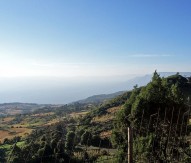
ERC backs Doggerland investigation
Researchers are set to use 4D technology to discover more information about a 100,000 square mile island that was flooded off the coast of the UK around 7,500 years ago.
Knowledge about Doggerland on how the island in the North Sea was colonised will also be gained. The scientists from the UK universities of Nottingham and Bradford are being supported by funding worth €1.8m from the European Research Council.
Speaking about research, Bradford’s Professor Vince Gaffney commented: “The only populated lands on Earth that have not yet been explored in any depth are those which have been lost underneath the sea.
“This project will develop technologies and methodologies that archaeologists around the world can use to explore similar landscapes including those around the Americas.”
The researchers are studying two North Sea valleys and also hope to gain new information regarding flint tool manufacture, animal DNA and plant pollen.
Gaffney says he hopes that the venture will also “give us a whole new way of approaching the massive areas of land that were populated by humans but which now lie beneath the sea”.
Doggerland was inhabited for around 6,000 years before being submerged by the sea between 18,000 and 5,500 BC.




